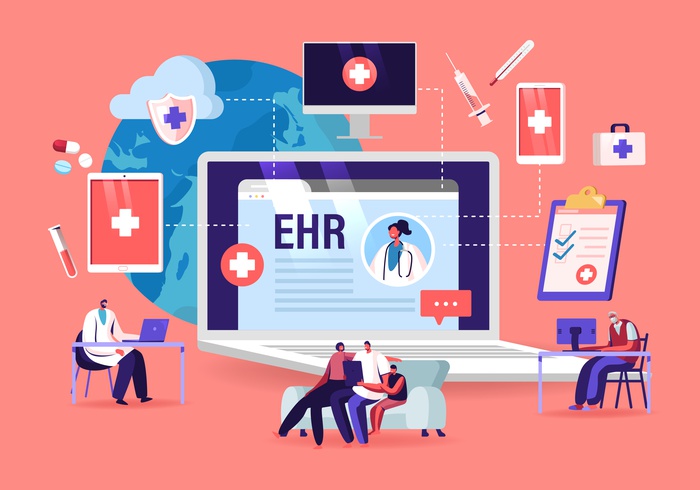
How EHRs Solve Patient Data Security Issues
Electronic Health Records (EHRs) have ushered in a new era of healthcare by digitizing patient information, streamlining processes, and improving patient care. However, as the healthcare industry transitioned from paper records to EHRs, it also encountered new challenges, particularly related to patient data security, including within revenue cycle management services. For healthcare organisations preparing for this transition, identifying the first step in ehr implementation is essential for laying a strong foundation and avoiding potential pitfalls. This initial step often sets the tone for how effectively the system will integrate into existing workflows and address critical needs. Ensuring the confidentiality, integrity, and availability of patient data is a top priority for healthcare organisations. In this article, we will explore how EHRs are instrumental in solving patient data security issues, especially within the context of revenue cycle management services.
1. Controlled Access and Authentication
One of the fundamental ways EHRs enhance patient data security is through controlled access and authentication. With EHR systems, healthcare providers can implement stringent access controls, ensuring that only authorized personnel can access patient records. This reduces the risk of unauthorized individuals viewing or altering sensitive patient data.
Built Points:
- EHRs employ role-based access control, allowing healthcare organizations to define access levels for different staff members based on their roles and responsibilities.
- Multi-factor authentication adds an additional layer of security, requiring users to provide multiple forms of verification before gaining access to EHR systems.
- Audit logs record every interaction with patient records, enabling administrators to track who accessed the data and when.
2. Encryption and Data Protection
EHR systems employ robust encryption techniques to protect patient data both in transit and at rest. Encryption converts patient data into unreadable code, which can only be deciphered with the appropriate encryption key. This safeguards patient information from unauthorized interception or access.
Built Points:
- Data in transit between EHR systems and external entities, such as labs or pharmacies, is encrypted to prevent eavesdropping or tampering.
- Data at rest, stored within EHR databases, is encrypted to protect against unauthorized access in case of security breaches.
- Encryption algorithms are regularly updated to stay ahead of evolving cyber threats.
3. Regular Software Updates and Patch Management
EHR vendors are committed to addressing security vulnerabilities promptly through software updates and patch management. Regular updates ensure that known security flaws are mitigated, reducing the risk of data breaches or cyberattacks.
Built Points:
- EHR providers release security patches to address vulnerabilities identified through ongoing monitoring and threat assessment.
- Automatic updates and patch management systems help healthcare organizations stay current with the latest security enhancements.
- Healthcare providers can implement change management protocols to ensure that updates are tested and deployed without disrupting daily operations.
4. Disaster Recovery and Data Backup
EHR systems include robust disaster recovery and data backup mechanisms. In the event of data loss due to natural disasters, hardware failures, or cyberattacks, EHRs enable healthcare organizations to restore patient data quickly, ensuring continuity of care.
Built Points:
- Data backup solutions create redundant copies of patient records, often stored in geographically diverse locations to protect against regional disasters.
- Disaster recovery plans outline the steps to be taken in case of data loss, facilitating a rapid response to minimize downtime.
- Regular data recovery drills and testing ensure that healthcare organizations are prepared to recover patient data effectively.
5. Regulatory Compliance
EHRs assist healthcare organizations in maintaining regulatory compliance with data protection laws and standards. Compliance with regulations such as the Health Insurance Portability and Accountability Act (HIPAA) is critical for protecting patient data.
Built Points:
- EHRs provide features and tools that align with regulatory requirements, including audit trails, data encryption, and secure messaging.
- Regular assessments and audits help healthcare organizations identify and address compliance gaps.
- Compliance training for staff ensures that they are well-informed about their responsibilities in safeguarding patient data.
6. User Training and Awareness
EHR systems include user training and awareness programs to educate healthcare professionals and staff about best practices in patient data security.
Built Points:
- Training modules cover topics such as password security, safe data handling, and recognizing phishing attempts.
- Regular awareness campaigns raise consciousness about the importance of patient data security and the role of each staff member in maintaining it.
- Simulated phishing exercises test staff readiness to respond to potential security threats.
7. Centralized Data Management
EHRs centralize patient data management, reducing the risk associated with fragmented paper records and decentralized information systems. Centralization allows for better control and oversight of data security measures.
Built Points:
- With centralized data, healthcare organizations can implement consistent security policies and access controls across all patient records.
- Centralization facilitates data monitoring and auditing, making it easier to detect and respond to security incidents.
- EHRs enable healthcare organizations to quickly identify data breaches and take immediate corrective actions.
Conclusion
Electronic Health Records (EHRs) have emerged as a powerful solution to the patient data security challenges faced by the healthcare industry. Through controlled access, encryption, regular updates, disaster recovery mechanisms, regulatory compliance, user training, and centralized data management, EHR systems ensure the confidentiality, integrity, and availability of patient data. By implementing robust security measures and fostering a culture of data security awareness, healthcare organizations can confidently navigate the digital landscape while safeguarding patient information against evolving threats. EHRs not only improve patient care but also strengthen the security of healthcare data, providing a win-win scenario for both healthcare providers and patients.
With a solid foundation in technology, backed by a BIT degree, Lucas Noah has carved a niche for himself in the world of content creation and digital storytelling. Currently lending his expertise to Creative Outrank LLC and Oceana Express LLC, Lucas has become a... Read more